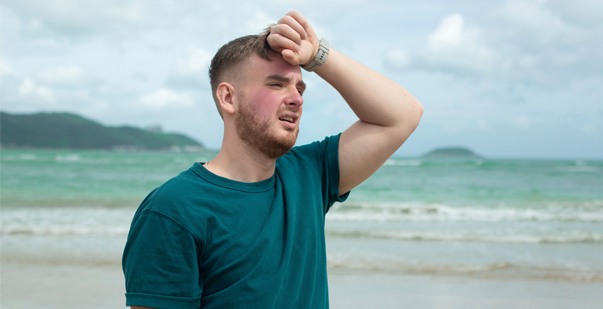
Last Updated on: March 6, 2024
Are you planning to hit the beach soon? Before you do, it’s important to learn about potential dangers you might face while soaking up the sun: heat exhaustion, heat stroke, and the need for CPR.
First, let’s talk about heat exhaustion. It happens when your body gets too hot and can’t cool down properly. Some signs of heat exhaustion include feeling dizzy, tired, heat cramps, or nauseous. You might also have headaches, muscle cramps, or a fast heartbeat. If you experience these symptoms, it’s essential to cool down immediately by finding a shady spot and drinking plenty of water.
Now, let’s move on to heat stroke. This is a more serious condition that can happen if heat exhaustion isn’t treated quickly. Heat stroke can cause damage to your organs and even be life-threatening. Symptoms include a high body temperature, confusion, seizures, and loss of consciousness. If you or someone around you is experiencing heat stroke, call 911 immediately and move to a cooler place.
Finally, let’s talk about CPR. This life-saving technique can help someone who is not breathing. CPR involves giving chest compressions and breaths to help circulate oxygen through the body. If you see someone who needs CPR, call 911 right away and start the technique until help arrives.
Remember, having fun at the beach is important, but so is staying safe. Be sure to keep an eye out for the signs of heat exhaustion and heat stroke and know what to do if someone needs CPR. By staying informed and prepared, you can enjoy your time in the sun while staying safe and healthy.
What is a Heat Stroke?
Heat stroke is a severe heat-related illness characterized by symptoms such as high body temperature (typically above 103°F or 40°C), altered mental state or confusion, rapid heart rate, dry and hot skin, absence of sweating, throbbing headache, and possibly nausea or vomiting. In some cases, individuals may experience muscle cramps, weakness, or loss of consciousness. It’s crucial to seek immediate medical assistance if someone exhibits these signs, as untreated heat stroke can be life-threatening.
5 Symptoms and Solutions of Heat Exhaustion
When you’re out in the sun for too long, your body can get too hot, and you might experience heat exhaustion. Here are five common signs and symptoms of heat exhaustion and what you can do to help mitigate the risk of heat-related illness.
Remember, if someone is experiencing severe symptoms of exhaustion from heat and CPR assistance is not nearby, it’s important to call for help and administer CPR yourself. Knowing what to do in an emergency can help save a life.
5 Symptoms and Solutions of Heat Stroke
Heat stroke is a serious condition if heat exhaustion isn’t treated quickly. Here are five common symptoms of heat stroke and what you can do to help:
Remember, heat stroke is a medical emergency and can be life-threatening. If you or someone else is experiencing these symptoms, calling for help and potentially administering CPR is important.
Conclusion
In conclusion, enjoying the beach and warm weather is fun, but staying safe and avoiding heat exhaustion and heat stroke is important.
Move the victim to a cooler or an air conditioned area to rest, and seek medical attention, if necessary. In severe cases, administer CPR to save a life.
By being aware of the signs of stroke or exhaustion from heat and CPR help to provide and administer, you can enjoy the sun and stay safe at the same time. Always watch for yourself and those around you, and don’t hesitate to take action if you notice any symptoms of heat related illnesses.
Staying safe in the heat is all about being informed and prepared, and knowing how to administer CPR can make all the difference in an emergency.